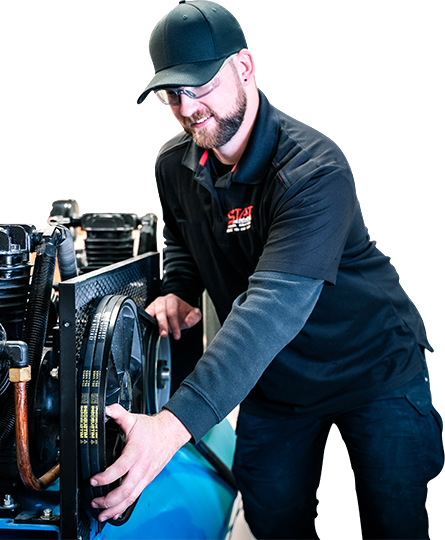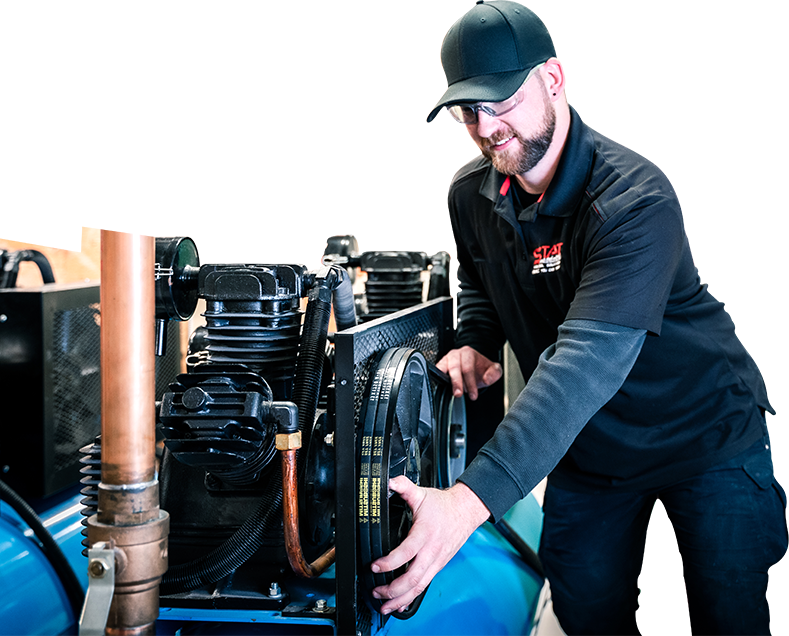A Guide to Prevent Excessive Dust in Your Home
While we can all agree every home has dust, it is also true that some homes have excess dust. It is possible to noticeably reduce your household dust by better understanding how your HVAC system works and the solutions available for reducing dust and improving your indoor air quality.
Let’s discuss some of the things you can do to reduce dust in your home.
Change Your Air Filter (Frequently)
1. The air filter in your home is the first line of defence against dust and it needs to be changed frequently. Because every home is different including: type of furnace, age of home, outside environment (e.g. homes near a field), household pets, family members who smoke, etc, it’s impossible to have one definitive answer for filter changing frequency that applies to everyone.
Inspect your air filter regularly to see how much time passes before you need to change it. This preventative diagnosis will help you better determine how often the filter needs changing. Remember if the filter is dirty every 30 days it is a sign you have a severe dust problem and also, take comfort in knowing the filter is working to help eliminate dust buildup.
You do have to change your furnace filter regularly, every 3 months at minimum if you think you have a dust problem. Older furnaces with filters that have a low MERV Rating (the higher the MERV Rating the better it is at collecting small particle air pollutants) should be changed every month. There is also a danger of using a filter that is rated higher than your system can handle, so be sure to understand the dangers if you are considering switching to a higher rated MERV filter.
Regularly changing your filter will greatly assist in reducing dust while at the same time increasing the life span of your HVAC equipment. Your furnace and AC will be more likely to run at peak efficiency with clean filters.
Filter Upgrades
For homes with family members who suffer from respiratory illnesses you may choose to upgrade to an antimicrobial or high-efficiency particulate air (HEPA) filter which are specially treated to trap micro-organisms, including bacteria, mildew, fungus, mold, yeast, and algae. Call us for recommendations or information on filter upgrades.
Whole House Cleaners
2. HVAC add-ons such as Indoor Air Purifiers, Media Cleaners, Hepa Filters and Electronic Air Cleaners can trap smaller and more air pollutant particles than a stand-alone furnace filter. For some homes one or two or more of these HVAC add-ons, depending on the conditions and environmental factors, may help in reducing the dust in your home.
It is also important to note that older furnaces or HVAC systems may struggle to draw the air through a higher MERV rated filter causing it to work much harder, use more energy and reduce the lifespan of the equipment. These furnace issues can also be caused by using filters which are not recommended by the manufacturer.
We strongly suggest you contact an HVAC professional before installing any HVAC add-on to your heating and cooling system to ensure you don’t void the warranty or cause damage to your HVAC equipment.
Ductwork Air Leakage
3. Often times we’ll find the culprit for dusty homes discovered in the ductwork of the home. Leaking air ducts will cause the dust, collected from the return air supply, to leak from within allowing the unfiltered air (along with dust) to spread around the home.
A leaky duct system will cause your system to work harder and use more electricity reducing the energy efficiency of your furnace. Tell-tale signs of leakage can include register vents looking dusty or dirty. Finally an HVAC system that has excess air leaks may not provide the constant heat or cool air to every room in the home as the system is designed to be airtight to operate properly.
Inspect for Leaks
You can look around the ductwork in your home to see if you can identify any areas that are leaking and repair as needed. Of course not all homes have exposed air ducts so this may be very limiting in terms of finding a leak within the system.
HVAC professionals are able to pressure test your system which can confirm your air ducts are sealed and operating efficiently or can reseal the ductwork as required.
Add Humidity
4. Because Calgary is in a dry climate location we experience dustier conditions than other humid locales. Because dry air can result in more dust floating through the air you can improve your indoor air quality while reducing dust with a whole-house humidifier. Besides helping to keep the dust down a whole-house humidifier also provides other advantages.
Using HVAC Fan to Clean Indoor Air
5. Keeping in mind the filters on HVAC systems require the fan to be running in order to remove dust and indoor air pollutants from your home. You can turn the thermostat from “Auto” to “On” to run the fan on the furnace. After dusting and vacuuming turn the fan on for a short period of time. This will allow the dust in the air to cycle through the HVAC filter before it resettles in the home.
Using your furnace fan to aid in reducing the dust in your home is effective and really doesn’t use an excessive amount of energy when operating. You must, however, remember to switch the thermostat back to “Auto” to prevent the fan from running constantly.
Close Windows
6. Yes we don’t necessarily want to close our windows as Calgary has a short warm season and it’s nice to enjoy fresh air blowing through the home when the furnace or AC is not needed. But do remember dust can easily get through your window screens, unlike your furnace filter, and open windows will create much more dust in the home than you may suspect.
Duct Cleaning
6. Older homes may benefit from having the ducts cleaned by a duct cleaning company. Over time the ductwork collects dirt, debris and dust which can accumulate until it is professionally cleaned.
Conclusion
If you have tried all the above tips for reducing dust in your home and you still see visible signs of excessive dust – your HVAC system should be inspected and serviced. Dust and dirt buildup could be a sign that your HVAC system needs maintenance before a small issue becomes an expensive repair.
Regular HVAC maintenance will ensure your system is operating efficiently and may help you detect the cause of your dust problem.





